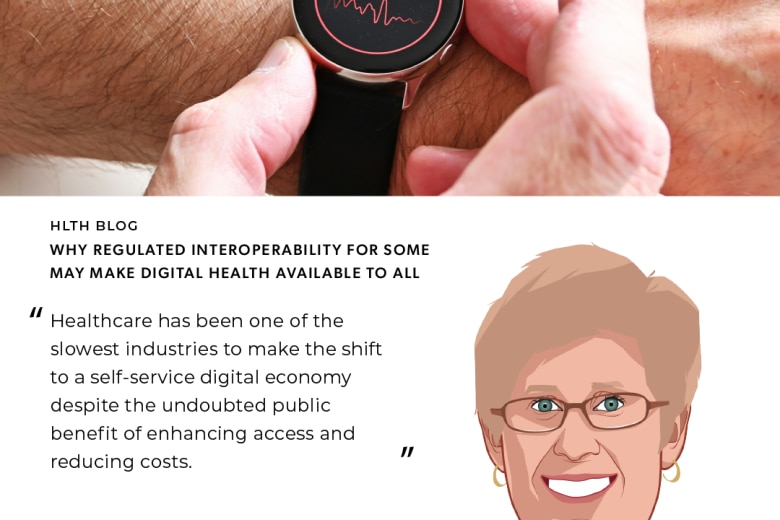Laboratories across the world still work largely in isolation to clinical providers. Even in today’s digital age, most laboratory professionals are not given the full clinical perspective on the patients they are carrying out tests for – something that must immediately change.
Laboratory professionals, like pathologists, need clinical context and access to wider sets of information, so they can make active and effective testing decisions and not just rely on requests from clinical colleagues in different care settings.
It is time to move the laboratory out of the back office, making it a core element of clinical delivery.
Why laboratories do not have the full clinical picture
Laboratories today often look at their data in isolation. This is because niche market solutions, specific to the laboratory, have created information silos, locked away from the frontline of healthcare.
Professionals working in diagnostics can only act on information they have, which is often limited and even flawed. Examination requests are too often handwritten notes that need to be interpreted and transcribed into the system.
Order systems also present limited information onscreen. A professional might see that the patient is anemic, or bleeding from a wound, but often is not aware of the full clinical picture. Providing information on previous testing, along with the patient’s clinical symptoms and current drug therapy, can improve interpretation of laboratory results without delays incurred by further investigative processes.
Inappropriate testing and delays in care
As long as the full clinical picture is absent from the laboratory, the most relevant testing could be missed in an initial request.
Take a scenario: The clinician on the ward receives a requested report and realizes an additional test is needed. A new test is subsequently ordered. The patient may then need to have another sample taken, which is sent again to the laboratory for retesting. A new report is written and sent to the doctor.
This extended process can result in longer stays, delays in clinical decisions, and unnecessary repeat tests and samples being taken from patients. At a time when healthcare budgets are under pressure, it is expensive to keep people in beds and to repeat tests. More importantly, there is the risk of delay in the diagnosis of the patient.
Doctors inclined to “cover everything” may also request a battery of different tests – leading to further costs and unnecessary pressure on scarce laboratory resources. The objective must be delivering relevant clinical information at the point of analysis and decision-making as quickly as possible.
The right clinical indicators for the right tests
Given the right information, professionals in the laboratory have the expertise to know when tests are needed and when they are not. In a clinical investigation for deep vein thrombosis, the Wells score can be a useful guide to assess the clinical risk of such a condition and provide direction on whether additional testing is needed. Without that score, they may only perform the tests requested by the clinician, which can result in the cumbersome re-testing process described earlier. This can be avoided if that clinical indicator were available at the initial point of testing.
Demand systems and a lack of prompts and guidance for appropriate testing at the point of care can cause similar problems. In the case of a cardiac arrest, for example, it is important to measure Troponin. It is critical to use clinical best practice guidelines as the indicators for retesting.
However, if the clinician does not have access to guidelines and demand management tools at the point of order, the patient will often have their sample taken multiple times, which the laboratory is then obliged to test. This process is often completed regardless of the inappropriate nature of the test, increasing the cost of laboratory services and wasted time and human resources.
By building rules into the ordering process, we can empower diagnostic professionals within the laboratory to overcome such challenges.
Taking the laboratory to the frontline of clinical care
The urgency for change is critical, with the increasing demands on our healthcare services. We must transform laboratory systems from being back-office support functions, to becoming frontline, engaged clinical services. By creating this change, pathologists can have the information they require, along with clinical indicators, to make decisions about appropriate tests for patients.
This is about communication between the various points of care, and recognizing the diagnostic function as a key clinical contributor. By empowering laboratory professionals with clinical information, we can change who plays a clinical role. This will not only save time, but make the clinical process more effective.
Evolving sources of information need to be considered, too, in this changing landscape. The next generation of laboratory systems must integrate with new care devices and wearable technologies. Wearables can measure a growing range of variables in the human body. If a wearable can measure blood glucose levels, there is no reason why that valuable information should not feed into a diabetic patient’s clinical record, for example.
There is finite capacity in the laboratory. If we can stop patients from being unnecessarily re-tested, then the laboratory will have more capacity to focus on core tasks. The consequence is a less stretched environment where both the quality and relevance of the output improves.
Benefits for the patient
Patients, too, can benefit from placing the laboratory at the center of care, and not just by avoiding unnecessary blood tests. Unnecessary repeat tests can be time-consuming and stressful. If a patient has a blood test and is called back for another, they often fear the worst. We want to produce the best outcomes we can for our patients.
Achieving the new models of care outlined in many national strategies means empowering the right people to make the best decisions for patients at every point of care. To do this, laboratory professionals must urgently be given access to the right clinical information in order to transform diagnostics, and to take decisive action for patients at the earliest possible opportunity. The current disconnect between clinical settings and our laboratories must come to an end, and this is achievable through new systems and processes that are now available.




































